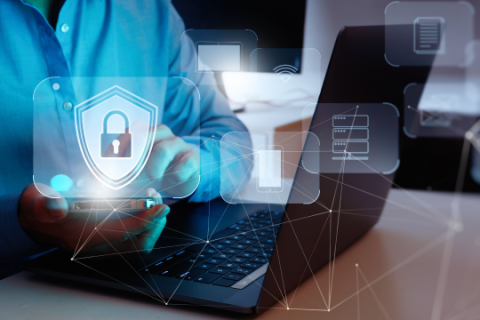The Top Features for Added Security and Compliance in File Transfers
Today’s data is always on the move—as are the threat actors ready to exploit it any chance they get. It’s critical to secure your sensitive IP both at rest and as it’s shared internally and externally. This attention to detail is what administrators need to ensure your company’s handling of high-value assets complies with GDPR, CCPA, PCI DSS, HIPAA, Sarbanes-Oxley (SOX), and more.
The Role of Managed File Transfer
You need the right tools and policies in place to succeed in this high-stakes environment, whether your infrastructure resides on-premises, in the cloud, or in a hybrid approach. A trusted managed file transfer solution like Globalscape EFT gives you customizable tools to keep security best practices front and center around the clock.
Globalscape EFT offers several add-on modules to build out your capabilities in a layered approach over time. We’ll focus on the Regulatory Compliance Module and the Advanced Authentication Modes Module (AAMM), which were previously known together as the Advanced Security Module. Each offers features and time-saving templates that help you enhance security and compliance in your daily operations.
Regulatory Compliance Module (RCM)
Building compliance into new sites from the ground up with Globalscape is the most effective way to meet regulatory goals and requirements. The RCM incorporates the latest compliance best practices and functionality to enable you to achieve this with ease, saving time in the process.
- Payment Card Industry compliant sites: Secure payment information properly during collection, storage, and transfer to comply with PCI DSS and keep credit card numbers from falling into the wrong hands.
- General Data Protection Regulation compliant sites: Meet the stringent requirements of this UK/EU law to safeguard personal data.
Explore the Regulatory Compliance Module>>
Advanced Authentication Modes Module (AAMM)
The AAMM helps administrators centralize user controls and bolster adherence to security policies targeting identity management. This includes the use of two key capabilities, two-factor authentication, and single sign-on.
Two-Factor Authentication
Also called 2FA and multi-factor authentication, easy-to-use two-factor authentication has grown in popularity to secure data and access across business and consumer environments. Designed as a two-step process, two-factor authentication requires a set of credentials in addition to a secondary form of verification like a passcode sent to a mobile device.
AAMM incorporates several forms of two-factor authentication based on your unique needs:
- Remote Authentication Dial In User Service (RADIUS) is a networking client/server protocol that provides centralized Authentication, Authorization, and Accounting (AAA) management for computers to connect to and use a network service
- RSA SecurID® uses software or hardware security tokens to verify authentication requests. Globalscape is an "RSA Secured" partner.
- Common Access Card (CAC) is a U.S. Department of Defense smart card, such as a military ID. The card has an embedded microchip that enables the encryption and cryptographic signing of email and use of public key infrastructure authentication.
AAMM also includes another critical security feature, single sign-on. Companies can utilize single sign-on authentication to enable users to log into multiple, independent applications and websites with one set of credentials. This eliminates password hassles while enforcing strict permissions and data protection policies. The AAMM uses Okta SSO to streamline access for specified individuals while protecting data from unauthorized use.
Explore the Advanced Authentication Modes Module>>
Securing sensitive files is a top priority for successful organizations today. Not only does MFT support regulatory compliance, but it also helps prevent business disruption and costly remediation that can result from compromised data.
